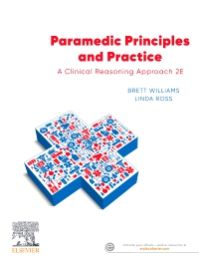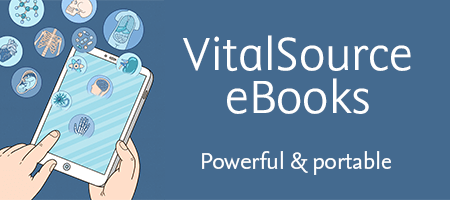Paramedic Principles and Practice, 2nd Edition
Edited by expert academics and educators, Brett Williams and Linda Ross, and written by content specialists and experienced clinicians, this essential resource encourages readers to see the links between the pathophysiology of a disease, how this creates the signs and symptoms and how these should to be managed in the out-of-hospital environment. Additionally, Paramedic Principles and Practice 2e will arm readers with not only technical knowledge and expertise, but also the non-technical components of providing emergency care, including professional attitudes and behaviours, decision-making, teamwork and communication skills.
Case studies are strategically used to contextualise the principles, step readers through possible scenarios that may be encountered and, importantly, reveal the process of reaching a safe and effective management plan. The case studies initially describe the pathology and typical presentation of a particular condition and progress to more-complex and less-typical scenarios where the practitioner faces increasing uncertainty.
Edited by expert academics and educators, Brett Williams and Linda Ross, and written by content specialists and experienced clinicians, this essential resource encourages readers to see the links between the pathophysiology of a disease, how this creates the signs and symptoms and how these should to be managed in the out-of-hospital environment. Additionally, Paramedic Principles and Practice 2e will arm readers with not only technical knowledge and expertise, but also the non-technical components of providing emergency care, including professional attitudes and behaviours, decision-making, teamwork and communication skills.
Case studies are strategically used to contextualise the principles, step readers through possible scenarios that may be encountered and, importantly, reveal the process of reaching a safe and effective management plan. The case studies initially describe the pathology and typical presentation of a particular condition and progress to more-complex and less-typical scenarios where the practitioner faces increasing uncertainty.
New to this edition
- New chapters , including: Paediatric patients; Child abuse and intimate partner violence; Geriatric patients; Tropical conditions; Mass casualty; Interpersonal communication and patient-focused care; Evidence-based practice in paramedicine; Pharmacokinetics and pharmacodynamics
- New case studies on major incidents and major trauma
- Focused ‘Implications for’ boxes specific to considerations including geriatrics, cultural diversity, communication challenges
- ‘Summary of therapeutic goals’ included with each case study
- Learning outcomes added to open each chapter
- Considered revision of pathophysiology across all chapters
Key Features
- The only paramedic-specific text designed for Australian and New Zealand students and paramedics
- Progressive case studies that bridge the gap from principles to practice
- More than 40 essential pathologies covering common paramedic call-outs
- Covers both technical and non-technical skills to develop the graduate into expert clinician
- Includes an eBook with the purchase of the print book
Additional resources on Evolve
- An eBook on VitalSource
Instructor/and Student resources:
- Image collection
Author Information












